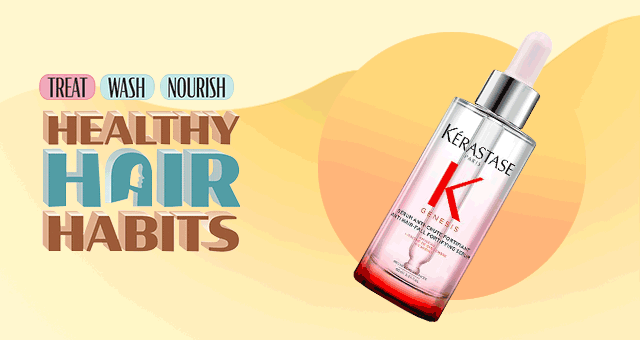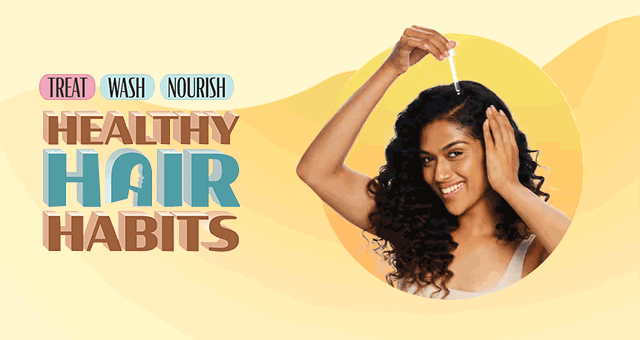
So you’re a rookie who isn’t prepped enough to deep dive straight into the plethora of yoga practices? We know it’s a bit of a stretch. Overpriced trainers and jam-packed work schedules don’t make it any better. However, you’re fully aware of all the amazing things that yoga can do to your body. Apart from trimming your muffin top and strengthening your core, yoga also improves metabolism and paves the way to healthier skin.
Okay, so here’s some good news. You don’t have to be a seasoned yogini to experience the tempting rewards. Here’s a guide on the two most effective yoga exercises: Surya Namaskar and Kapalbhati. Make them a part of your daily morning routine and trust us when we say, yoga-na love it!
• Surya Namaskar
Surya Namaskar comes from the words ‘Surya’ which means ‘Sun’ and 'Namaskar' which means 'Salutation'. Each of the 12 postures in this integral yoga engages different parts of the body which improves the overall well-being.
When to Do Surya Namaskar?
Surya Namaskar asana is best done early morning during sunrise on an empty stomach.
Surya Namaskar Steps:
Here’s a lowdown on the 12 powerful postures in Surya Namaskar and how they help your body. The complete guide to Surya Namaskar steps has been divided to focus on each of these postures individually.

1. Prayer pose (Pranamasana)
Step1: Standing at the edge of your mat, keep your feet together and your spine erect.
Step2: Expand your chest and relax your shoulders.
Step 3: Inhale and lift both your arms up on the sides.
Step 4: Exhale and join your palms in front of your chest in a prayer position.
How does it help: The Prayer pose relaxes your nervous system and helps maintain body balance.
2. Raised arms pose (Hastauttanasana)
Step 1: Inhale while gently lifting your arms (in the prayer position) in the backward direction.
Step 2: Bring your biceps closer to your ears and try reaching up without lifting the heels of your feet.
Step 3: Push your pelvis a bit forward and make an effort to vertically stretch your whole body.
How does it help: The Raised arms pose tones abdominal muscles and improves oxygen intake, fully utilizing your lung capacity.


3. Standing forward bend pose (Hasta Padasana)
Step 1: Exhale and bend forward from the waist while keeping your spine straight.
Step 2: Bring both your hands down to place the palms on the floor, beside your feet. Your palms should be as straightly placed on the floor as possible.
Step 3: Make an effort to ensure your knees don’t bend.
How does it help: The Standing forward bend pose improves flexibility of the waist and the spine while stretching the hamstrings.
4. Equestrian pose (Ashwa Sanchalanasana)
Step 1: Now breathe in and gradually stretch out your right leg as far back as possible.
Step 2: Ensure your left feet is firm in the original position and is exactly between your palms.
Step 3: Touching your right knee to the mat, slowly look up and exhale.
How does it help: The Equestrian pose strengthens the leg muscles while making the spine and neck flexible. It’s great for relief from sciatica and indigestion.


5. Stick pose (Dandasana)
Step 1: Now breathe in and similarly push your left leg backward.
Step 2: Lift both the knees off the mat and line your body parallelly to the floor.
Step 3: Bend your elbows in a way to ensure both your hands are perpendicular to the floor.
How does it help: The Stick pose strengthens the arms and back while improving your overall posture.
6. Salute with eight parts or points (Ashtanga Namaskara)
Step 1: Slowly bring your knees to the floor and breathe out.
Step 2: Pushing your hips up, slide forward. Rest your chest and chin on the ground.
Step 3: Gradually raise your posterior a bit. Your two hands, two feet, two knees, chest and chin (eight parts) should touch the ground.
How does it help: The Salute with eight parts or points pose strengthens back muscles and de-stresses the mind to reduce anxiety.


7. Cobra pose (Bhujangasana)
Step 1: Now breathe in and slide forward to push your chest out to get into the Cobra pose.
Step 2: Keep your bent elbows firm and ensure your shoulders are away from your ears.
Step 3: Slowly look up.
How does it help: The Cobra pose stretches the shoulders, chest and back while stimulating your heart.
8. Downward facing dog pose (Adho Mukha Svanasana)
Step 1: Gradually breathe out and lift your hips and tailbone.
Step 2: Push your chest downward to create an inverted V pose.
Step 3: Ensure your heels are on the ground while attempting to stretch further.
How does it help: The Downward facing dog pose strengthens muscles of your arms and legs while boosting blood flow to the spine.


9. Equestrian pose – Ashwa Sanchalanasana
Step 1: Inhale and bring your right foot forward. Ensure it’s exactly between the two hands.
Step 2: Next touch your left knee to the ground.
Step 3: Gradually press your hips down and look up.
How does it help: The Equestrian pose tones abdominal muscles and stretches your leg muscles.
10. Standing forward bend pose (Hasta Padasana)
Step 1: Now bring your left foot forward while breathing out.
Step 2: Keep your palms firm on the ground.
Step 3: Gently straighten your knees.
How does it help: The Standing forward bend pose stretches the hamstrings.


11. Raised arms pose (Hastauttanasana)
Step 1: Inhale and roll your spine up.
Step 2: Raise both your hands up in the backward direction and look up. Ensure your biceps are close to your ears.
Step 3: Push your hips slightly outward.
How does it help: The Raised arms pose stretches and tones abdominal muscles while expanding your chest for better breathing.
12. Mountain pose (Tadasana)
Step 1: Gradually breathe out and straighten your body.
Step 2: Bring both your arms down and look straight ahead.
Step 3: Now lie down on your yoga mat and relax for a while. Give your body time to experience the calm sensation post Surya Namaskar.
How does it help: The Mountain pose strengthens your legs and improves overall body posture. It’s also beneficial for relieving sciatica.

Surya Namaskar Benefits
- The extensive stretching in Surya Namaskar yoga builds the endurance of your muscles and joints. It also help release any muscle tension.
- It makes your skin glow and maintain firmness by pumping fresh blood throughout your body. In other words, those anxious-to-arrive wrinkles have no choice but to wait.
- Watch the pounds gradually disappear. Since it’s physically exerting on every part of your body, it’s your best bet at losing the stubborn flab.
- You’ve probably tried everything to avoid hair loss but all you had to do was look towards the sun. The improved blood circulation to your scalp in Surya Namaskar yoga helps nourish hair follicles and prevent hair loss.
- It corrects your body posture and drastically improves your self-awareness and energy levels. This means improved productivity.
- Deep breathing during this yoga relaxes your nerve cells which positively impacts your cognitive functioning. It brings more emotional stability so you can dial down the mood swings.
• Kapalbhati
Kapalbhati comes from the words 'Kapal' which means ‘forehead’ and 'Bhati' which means 'to shine'. It's a form of cleansing exercise that removes toxins from the body and brings a natural glow to your face.
When to Do Kapalbhati?
Kapalbhati pranayama is best done early morning for 15 minutes on an empty stomach. Avoid doing it within two hours of eating or drinking.

Kapalbhati Steps:
Step 1: Place a yoga mat on the floor.
Step 2: Sit comfortably with your legs crossed and your spine erect.
Step 3: Close your eyes and place both your hands on the knees with your palms facing upward.
Step 4: Now inhale deeply through both your nostrils.
Step 5: Exhale through your nostrils with force while pulling your stomach in. You’ll feel some pressure in your abdomen as you exhale.
Step 6: Do 20 reps to complete one round of Kapalbhati pranayama.
Kapalbhati Benefits
- Regular Kapalbhati yoga boosts blood circulation which improves your metabolic rate. This means losing all the excess fat, especially around your tummy. If that doesn’t sound enticing, we don’t know what will.
- Since it promotes blood supply to all parts of your body, it improves the overall health and functioning of your body. A heavily medicated meditated way to being healthy? Sounds good.
- Kapalbhati yoga stimulates abdominal muscles to help cure indigestion, acidity, sinus, and diabetes.
- It energizes your brain cells and boosts your concentration and memory. You’ll know it’s working when you stop forgetting where you left the keys at!
- It helps in better absorption and assimilation of nutrients. So, you can finally see your diet work this time. Phew!
- You’ve always heard about ‘aligning your chakras’ so that your body and mind are energized. Well, come experience that on a yoga mat near you. Now showing: Kapalbhati.
- The increased blood circulation with better breathing practices naturally improves skin texture and promotes a brighter complexion. Well, we could all do with some glow, no?










